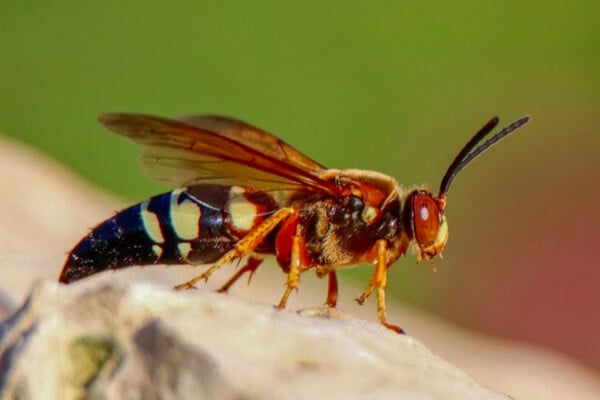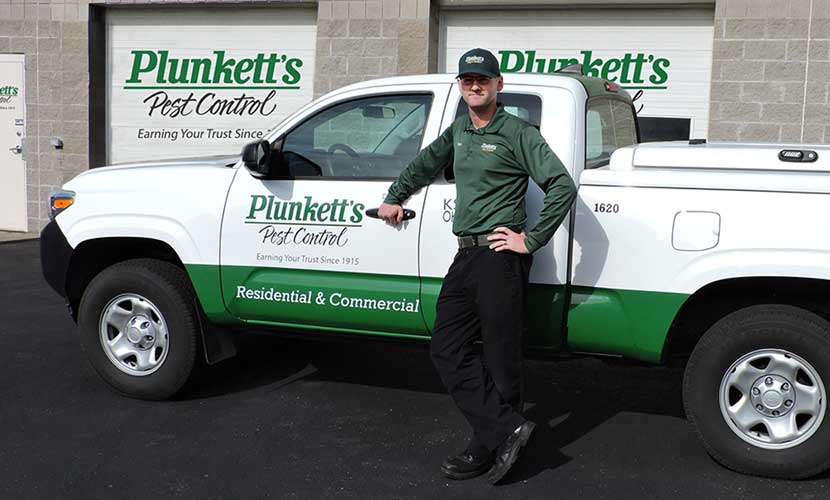Ground Nesting Wasp Control

The common name comes from the fact that these wasps usually nest in the ground – especially in sandy soil. These solitary stinging insects can become urban nuisance pests when they nest in large numbers near structures, and the females can sting if physically threatened. They are found throughout the United States.
BEHAVIOR
Cicada killers measure 1 to 11/2 inch long, the females being larger than the males. The wasps are robust with blonde hairs on the thorax, paired light yellow patterns on the mostly black abdomen and reddish legs.
Sphex digger wasps measure 1 to 11/2 inch long and have a short but distinct threadlike waist. Females and males are similar in size.
The great golden digger wasp measures about 1 inch long, has blonde hairs on the thorax and a bi-colored abdomen with red on the front half and black on the rear half.
The katydid wasp is also about 1 inch long, and nearly all black except for blonde hairs on the thorax and face and some red and yellow on the legs. The great black wasp, Sphex pensylvanicus, measures about 11/2 inches long, is completely black with a bluish sheen. This larger wasp favors nesting cavities in storm sewer basins and window wells.
Bicyrtes sand wasps range 2/3 to 1 inch long, with the females being larger than the males. These wasps are mostly black, with paired pale-yellow wedge patterns on four to five abdominal segments and yellow legs; their eyes have a greenish luster. Burrowing occurs mainly in plain sand.
CONTROL AND PREVENTION
The areas being utilized by solitary wasps for nesting may not require treatment if humans rarely access them. If treatment is called for, activity sites should be roped off and avoided until a Plunkett’s technician can treat the access holes in the soil or structural material that is infested. Where practical, a weighted tarpaulin covering over a relatively small nesting zone (e.g., a sandbox or playground), kept in place for at least two weeks, will discourage further nesting by wasps for the duration of the season.
APPEARANCE
This category includes medium- to large-sized wasps with females and males that measure 2/3 to 11/2 inch long. They vary in appearance, according to genus, but share some similar behaviors.
PROFESSIONAL CONTROL
These are beneficial insects (they help control the spread of other pest breeds) and control should be avoided if possible. However, if control is necessary, you can contact us and a Plunkett’s technician will treat the wasp entrance holes with an appropriately labeled residual insecticide. Additional treatments are sometimes warranted, especially if the burrows remain intact and insecticide treatment is diluted with frequent irrigation or rain showers.







